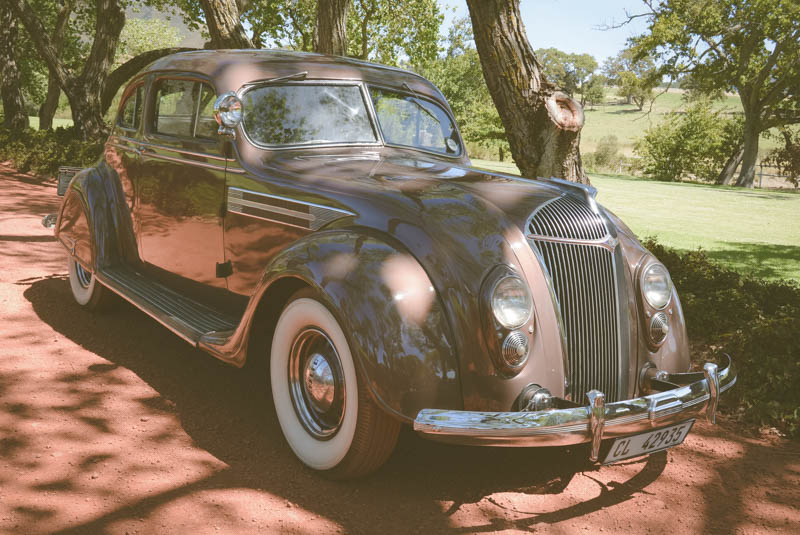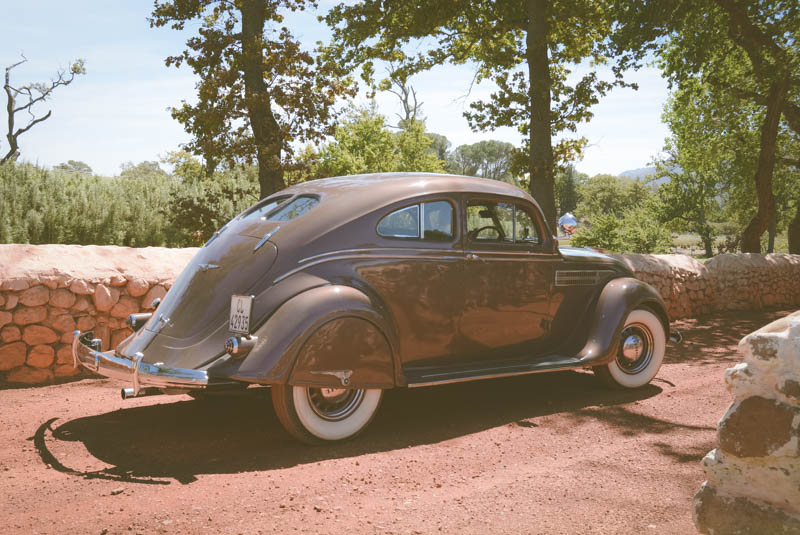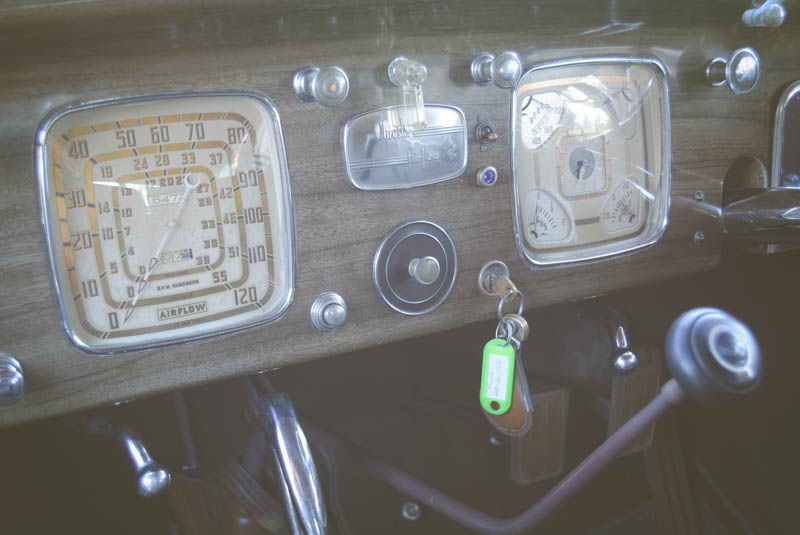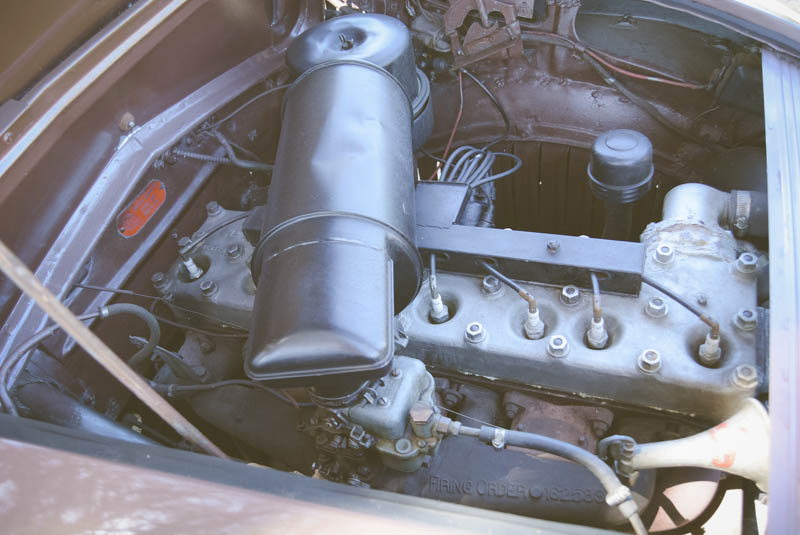
30 Mar COLLECTION IN ACTION – Chrysler Airflow
The third in a new, alphabetical series of short driving impressions of some of the museum’s car collection. This month we go aero art deco in a Chrysler Airflow.
In the mid 1930s the Chrysler Corporation’s design path went into a streamlining phase with models boasting smooth and flowing contours rather than the more formal, upright shapes that preceded them. Art Deco was also in its prime at that time and Chrysler saw fit to combine the two design influences to produce a car that was like no other American production car to date.
Inspired by the vision of one of its senior engineers Carl Breer, Chrysler introduced the aerodynamic Airflow styling on its Series CY, CU, CV, CX and CW platforms and to promote the concept promptly set about setting 72 stock car speed and endurance records at Daytona Beach in a 4,9-litre straight-eight CU Coupé. A similar car went from Los Angeles to New York averaging 18,1 US mpg, equivalent to 13 litres/100 km. Sales were encouraging…
Airflows continued through 1935 and into 1936 when FMM’s Coupé featured here was built. Its code number is C9 and the body number suggests it was the eleventh-last unit to be built in that model year. In fact, being a coupé makes it quite rare as only 110 were manufactured during the 1936MY.
I suppose today the overall shape would be described as ‘organic’. From the tall waterfall grille to the tapering tail, there is fluidity to the shape that only the modestly raked split windscreen breaks up. Even the fenders are semi-integrated into the body – running boards are the only styling feature carried over from established practice.
The Art Deco influence can be seen in the design of the bumpers and overriders, the headlamp nacelle, the bonnet-side air vents, the twin chrome strips along the waistline, the rear wheel spats with their winged embellishment and the ‘rocket-ship’ tail-light lenses. Inside the theme continues with the design and detailing of the dashboard controls and instruments, the steering wheel and even the ashtrays in the rear seat outer armrests. Oh, the markings on the speedo even show the revs relevant to the speed. Everywhere you look there is something to be admired – elegance AND function. Oh, and the ‘hooter’ was an attention-grabbing wolf whistle!
Turn the key, press the button and the straight-eight eases into life with a slow, steady tickover. The now 5,3-litre motor (it had been enlarged for 1935MY) pumps out 86 kW at 3 400 r/min and a healthy 325 N.m of torque at a low 1 200. Select first, release the pistol-grip handbrake and the Airflow calmly moves away. With such a long wand, there is a lot of movement selecting the gears of the three-speed ’box but once the white-walled tyres are rolling, with so much torque progress is entirely fuss-free. Steering is naturally heavy and low geared and the ride is firm but the very nature of the car creates a feeling of well-being – something mid-’30s America was trying to restore after the effects of the Great Depression.
Which may partly explain why Chrysler’s styling innovation was doomed not to succeed. The Airflow range of models was discontinued in 1937, having failed to capture the imagination – and cheque books – of the people, the design considered too advanced, too different. Quality issues with production of the all-steel body was also a negative. Sadly, Chrysler’s bold move was ahead of its time and short-lived, the survivors serving as a reminder of what might have been. MM






